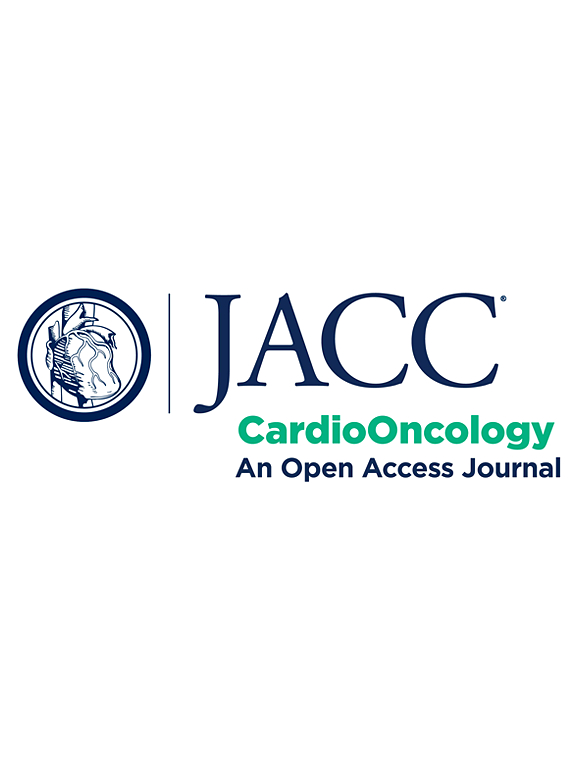全因心血管疾病和癌症发病率的多队列表观基因组关联研究
IF 12
1区 医学
Q1 CARDIAC & CARDIOVASCULAR SYSTEMS
引用次数: 0
摘要
背景越来越多的证据揭示了心血管疾病(CVD)和癌症之间的复杂关系,它们有着共同的风险因素和生物学途径:方法采用两阶段策略,包括首先对每个队列进行非靶向的全表观基因组关联研究,然后在已识别的差异甲基化位置(DMPs)联合集中运行靶向模型。我们还通过生物信息学分析探索了潜在的分子通路。在随后的荟萃分析中,分别有 3 个和 1 个 DMPs 仅对心血管疾病和癌症与心血管疾病有统计学意义。没有任何荟萃分析的 DMPs 只对癌症有统计学意义。富集分析表明,癌症和心血管疾病涉及相互关联的生物通路。在 DrugBank 数据库中,与 1 碳代谢以及癌症和心血管疾病药物有关的元素被确定为目标基因产品的潜在药物。在一项仅限于发生心血管疾病的 950 名 SHS 参与者的额外分析中,当根据其他队列中发现的癌症和心血管疾病联合 DMPs 调整模型时,发生癌症的 C 指数从 0.618(95% CI:0.570-0.672)上升到 0.971(95% CI:0.963-0.978)。根据心血管疾病和癌症发病的共同表观遗传特征进行筛查可能有助于识别癌症风险增加的新诊断心血管疾病患者。本文章由计算机程序翻译,如有差异,请以英文原文为准。
Multicohort Epigenome-Wide Association Study of All-Cause Cardiovascular Disease and Cancer Incidence
Background
Emerging evidence reveals a complex relationship between cardiovascular disease (CVD) and cancer, which share common risk factors and biological pathways.
Objectives
The aim of this study was to evaluate common epigenetic signatures for CVD and cancer incidence in 3 ethnically diverse cohorts: Native Americans from the SHS (Strong Heart Study), European Americans from the FHS (Framingham Heart Study), and European Americans and African Americans from the ARIC (Atherosclerosis Risk In Communities) study.
Methods
A 2-stage strategy was used that included first conducting untargeted epigenome-wide association studies for each cohort and then running targeted models in the union set of identified differentially methylated positions (DMPs). We also explored potential molecular pathways by conducting a bioinformatics analysis.
Results
Common DMPs were identified across all populations. In a subsequent meta-analysis, 3 and 1 of those DMPs were statistically significant for CVD only and both cancer and CVD, respectively. No meta-analyzed DMPs were statistically significant for cancer only. The enrichment analysis pointed to interconnected biological pathways involved in cancer and CVD. In the DrugBank database, elements related to 1-carbon metabolism and cancer and CVD medications were identified as potential drugs for target gene products. In an additional analysis restricted to the 950 SHS participants who developed incident CVD, the C index for incident cancer increased from 0.618 (95% CI: 0.570-0.672) to 0.971 (95% CI: 0.963-0.978) when adjusting the models for the combined cancer and CVD DMPs identified in the other cohorts.
Conclusions
These results point to molecular pathways and potential treatments for precision prevention of CVD and cancer. Screening based on common epigenetic signatures of incident CVD and cancer may help identify patients with newly diagnosed CVD at increased cancer risk.
求助全文
通过发布文献求助,成功后即可免费获取论文全文。
去求助
来源期刊

Jacc: Cardiooncology
Multiple-
CiteScore
12.50
自引率
6.30%
发文量
106
期刊介绍:
JACC: CardioOncology is a specialized journal that belongs to the esteemed Journal of the American College of Cardiology (JACC) family. Its purpose is to enhance cardiovascular care for cancer patients by publishing high-quality, innovative scientific research and sharing evidence-based knowledge.
The journal aims to revolutionize the field of cardio-oncology and actively involve and educate professionals in both cardiovascular and oncology fields. It covers a wide range of topics including pre-clinical, translational, and clinical research, as well as best practices in cardio-oncology. Key areas of focus include understanding disease mechanisms, utilizing in vitro and in vivo models, exploring novel and traditional therapeutics (across Phase I-IV trials), studying epidemiology, employing precision medicine, and investigating primary and secondary prevention.
Amyloidosis, cardiovascular risk factors, heart failure, and vascular disease are some examples of the disease states that are of particular interest to the journal. However, it welcomes research on other relevant conditions as well.
 求助内容:
求助内容: 应助结果提醒方式:
应助结果提醒方式:


